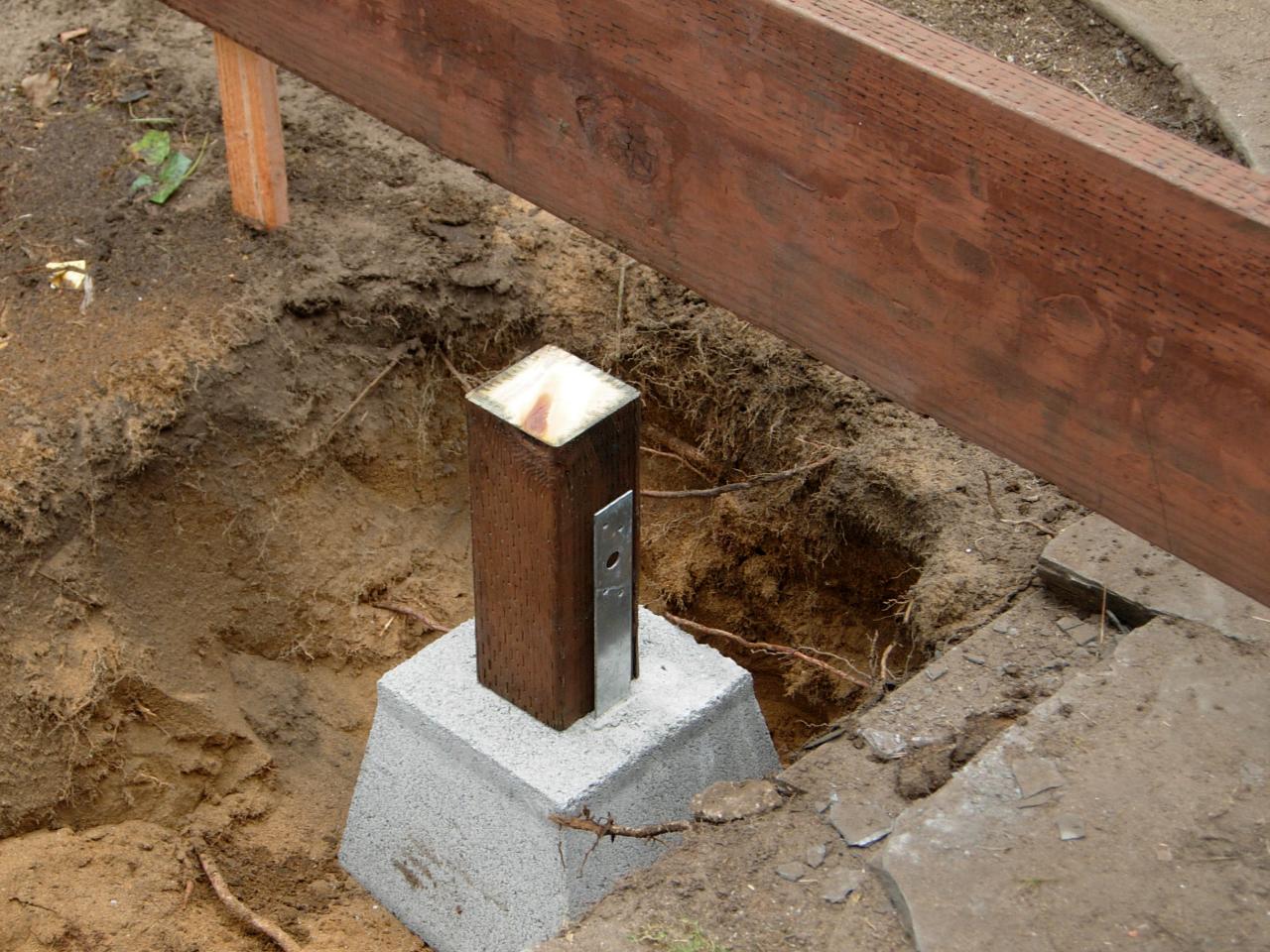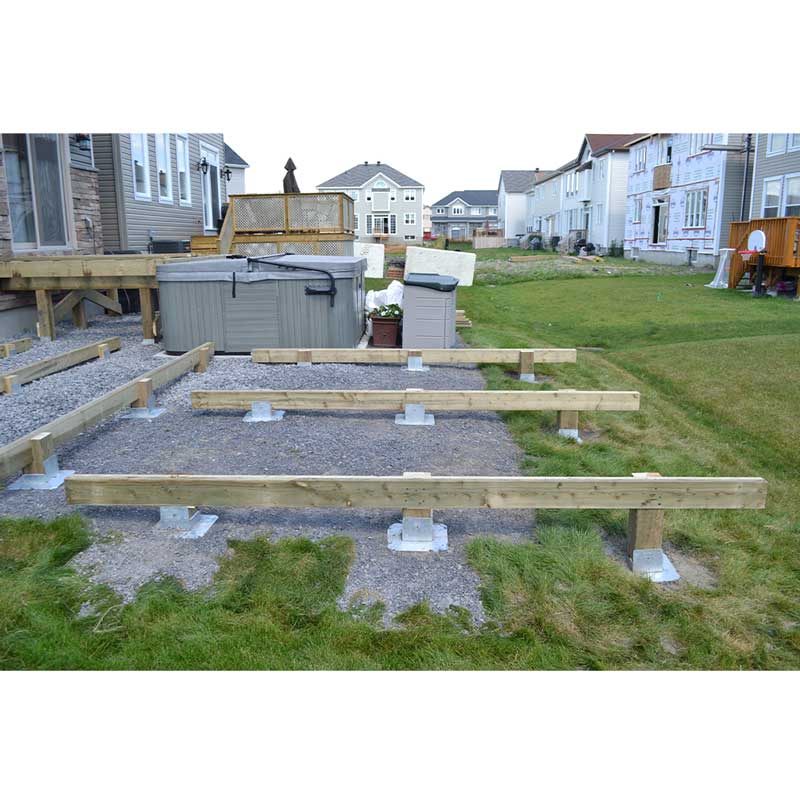Picking the Right Deck Footings for Security and Durability
The durability and safety of your deck depend heavily on the kind of footings you select, as they offer the important support and stability to stand up to the examination of time. In this discussion, we will certainly explore the numerous kinds of deck grounds, consider the essential factors to weigh when making a choice, and delve into the pros and cons of various choices.
Kinds of Deck Grounds
There are a number of kinds of deck grounds that can be made use of, each offering distinct advantages and considerations. One typical kind of footing is the concrete pier footing. These footings include a round opening full of concrete, which provides a solid foundation for the deck messages. Concrete pier footings are fairly simple to set up and supply excellent stability, making them a popular choice for numerous deck projects.
An additional kind of ground is the helical stack ground. Helical stacks are steel shafts with helical plates connected to them. These footings are installed by screwing them right into the ground, which develops a secure foundation for the deck. Helical heap grounds are excellent for locations with difficult soil problems, as they can be mounted in almost any type of sort of dirt. If required., they additionally enable for very easy adjustment and progressing of the deck.
Alternatively, some builders choose precast concrete footings. These grounds are made from resilient concrete and can be found in different sizes and shapes to accommodate various deck designs. Precast concrete grounds are practical to mount and supply a stable base for the deck framework.
Finally, one more alternative is the post-in-anchor footing system. This kind of footing entails driving a metal support into the ground and connecting it to the deck post. It uses flexibility in regards to placing the deck messages and is suitable for decks with light-weight frameworks.
When picking the best sort of deck footing, it is important to think about variables such as soil conditions, deck lots, and local building ordinance (Deck Footings). Consulting with a specialist contractor or structural designer can aid ensure the ideal footing is selected for a risk-free and secure deck
Variables to Consider When Selecting Grounds
When picking the appropriate footings for a deck, it is critical to carefully take into consideration various factors such as soil problems, deck tons, and adherence to local building regulations. These aspects play a significant function in ensuring the stability and sturdiness of the deck framework.
The type of dirt on which the deck will certainly be developed figures out the type of grounds called for. On the various other hand, decks developed on clay or expansive dirts might require grounds that can suit the soil's tendency to increase and contract.
Another vital variable is the deck tons. The weight of the deck, including the products utilized and any possible online loads such as furnishings or events, must be considered when choosing footings. The grounds need to be created to bear the weight of the deck and disperse it uniformly to stop any kind of structural issues or failings.
Lastly, adherence to neighborhood building regulations is extremely important. Building regulations differ from area to area, and it is important to comply with the details demands established by the local authorities. Deck Footings. These codes make certain that the deck is developed securely and meets the essential standards for architectural integrity and load-bearing capability
Concrete Grounds: Disadvantages and pros

Concrete footings use numerous benefits and negative aspects when made use of as article source the structure for a deck. On the favorable side, concrete grounds give superb security and longevity.
An additional benefit of concrete grounds is their adaptability. They can be put right into different sizes and shapes to accommodate numerous deck layouts and arrangements. Concrete grounds can be personalized to fit the particular requirements and requirements of the deck structure.
However, there are also some disadvantages to utilizing concrete footings. One major drawback is the price and labor involved in their setup. Concrete footings require excavation and typically require the help of heavy machinery. This can raise the total cost of the deck project and may need professional aid.

Helical Piers Vs. Sonotubes: Which Is Better?
In considering the structure alternatives for a deck, the contrast between helical piers and sonotubes is important in identifying the remarkable option. They are twisted right into the ground using hydraulic equipment, providing a resilient and stable foundation for the deck.
When it involves stability and durability, helical piers have the upper hand. The helical plates on the piers produce a strong grip with the soil, changing or protecting against any kind of motion of the deck. This is especially valuable in locations with unpredictable or changing soil problems. Sonotubes, on the other hand, rely exclusively on the concrete loading for security, which may not provide the very same degree of toughness and resistance.
In regards to setup, helical piers are fairly less complicated and faster to set up contrasted to sonotubes. The hydraulic equipment made use of to twist the piers right into the ground makes certain a efficient and quick process. Sonotubes, on the other hand, call for excavating openings and pouring concrete, which can be time-consuming and labor-intensive.
Additionally, helical piers are a more versatile alternative. They can be utilized in various dirt conditions and can be changed or look what i found strengthened if required. Sonotubes, on the various other hand, might call for extra assistance, such as rebar, in particular soil conditions or areas with high lots demands.
Choosing the Right Footings for Your Deck's Measurements
For optimum architectural stability, it is vital to very carefully select the proper grounds that line up with the measurements of your deck. The dimensions of your deck, including its length, width, and height, play a substantial duty in identifying the type and size of footings required.
When choosing footings for your deck, it is essential to take into consideration the load-bearing capability of the dirt. The weight of the deck, incorporated with the weight of any type of furnishings or individuals on it, puts in a significant force on the footings (Deck Footings). It is critical to select footings that can properly have a peek at these guys sustain this weight without sinking or shifting over time.
Larger decks with better dimensions need larger footings to provide enough security and assistance. The shape of the grounds, whether they are square or rounded, depends on the style and format of the deck.
Conclusion
In verdict, picking the right deck footings is critical for ensuring stability and toughness. Aspects such as the type of grounds, the deck's dimensions, and the pros and cons of various alternatives should be thought about.
These grounds consist of a round hole filled up with concrete, which gives a strong structure for the deck messages. Concrete pier footings are relatively easy to set up and supply outstanding security, making them a prominent selection for numerous deck projects.
Precast concrete grounds are practical to install and give a steady base for the deck structure.
It supplies versatility in terms of placing the deck messages and is appropriate for decks with light-weight frameworks.
Concrete grounds use several benefits and disadvantages when used as the foundation for a deck.